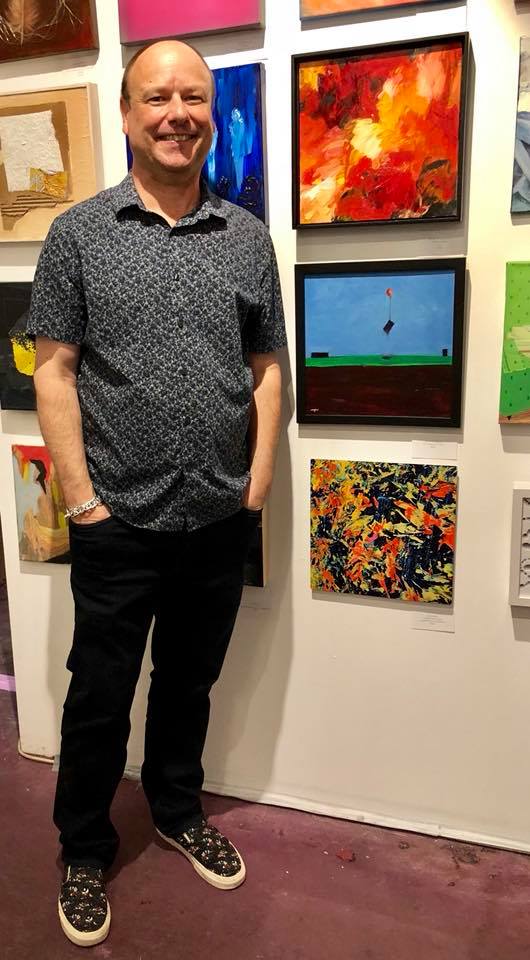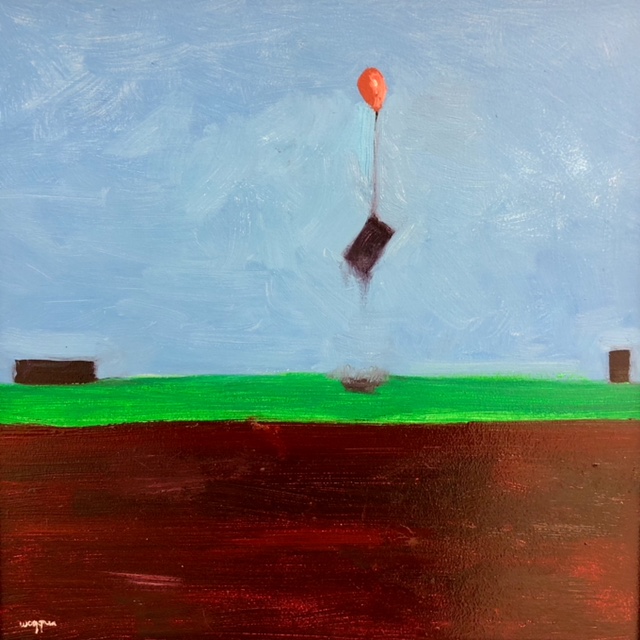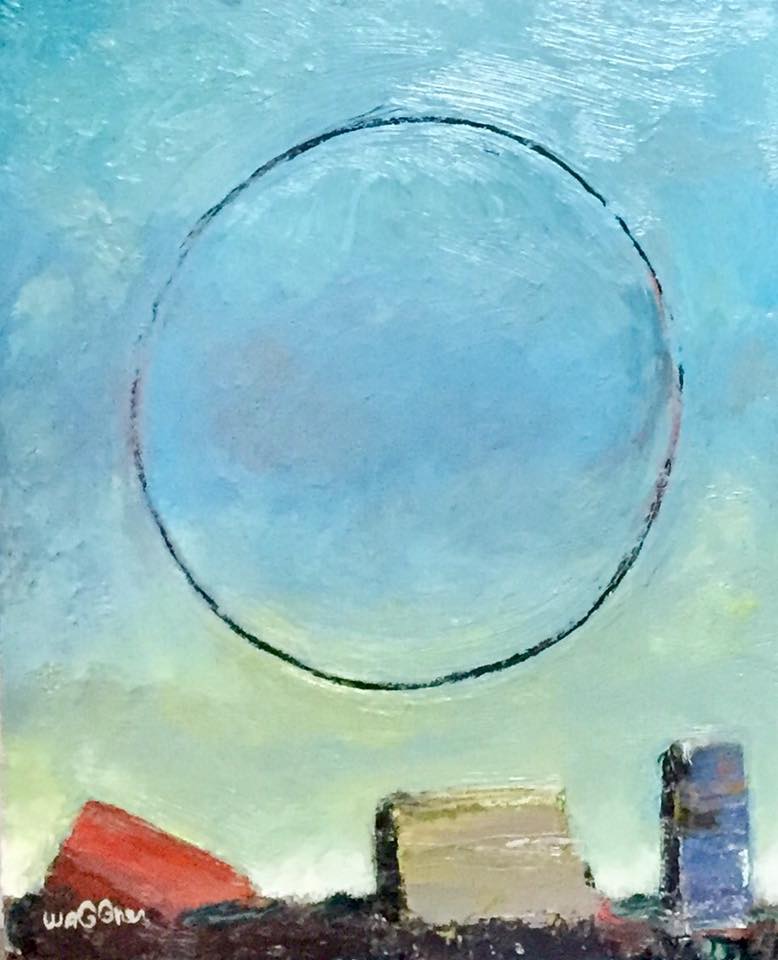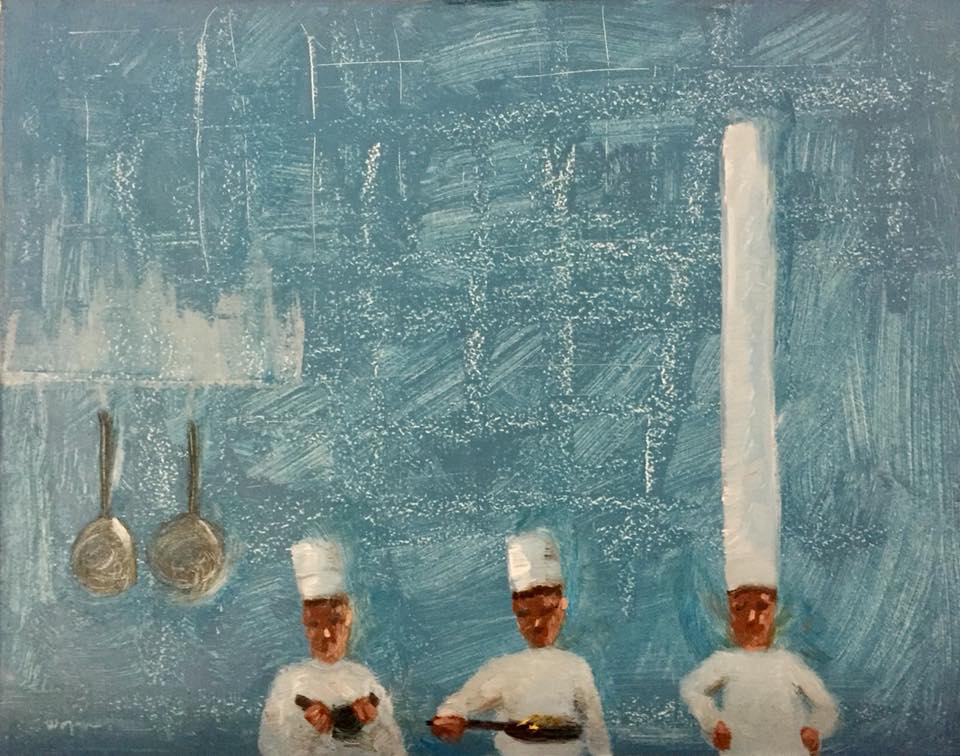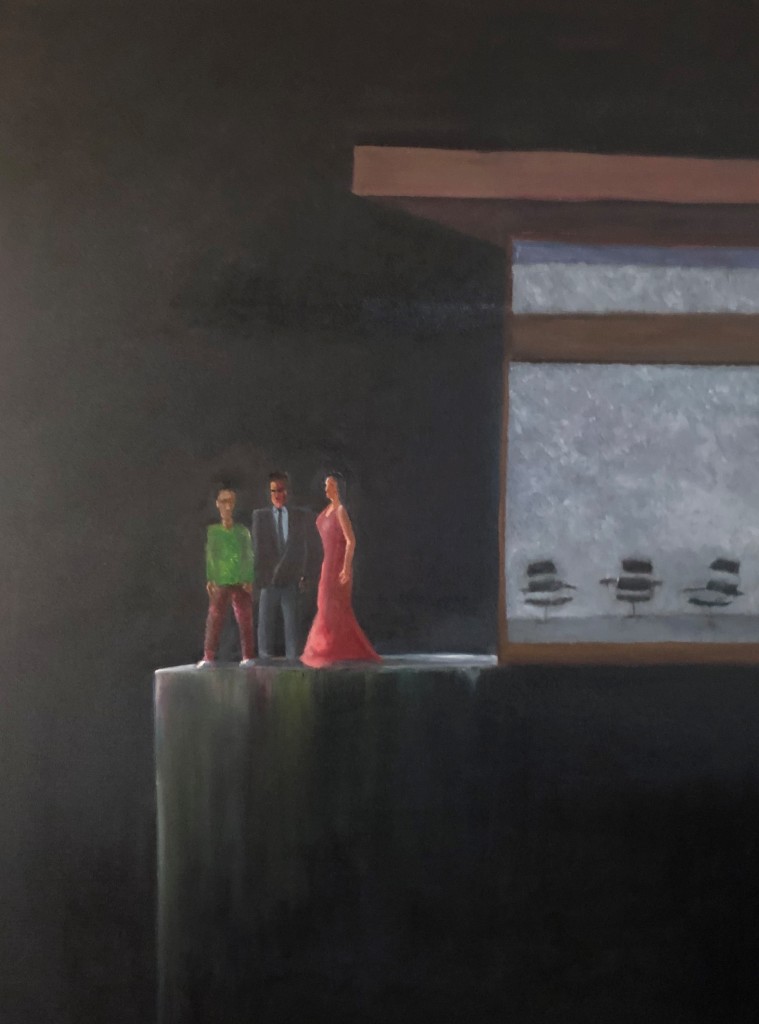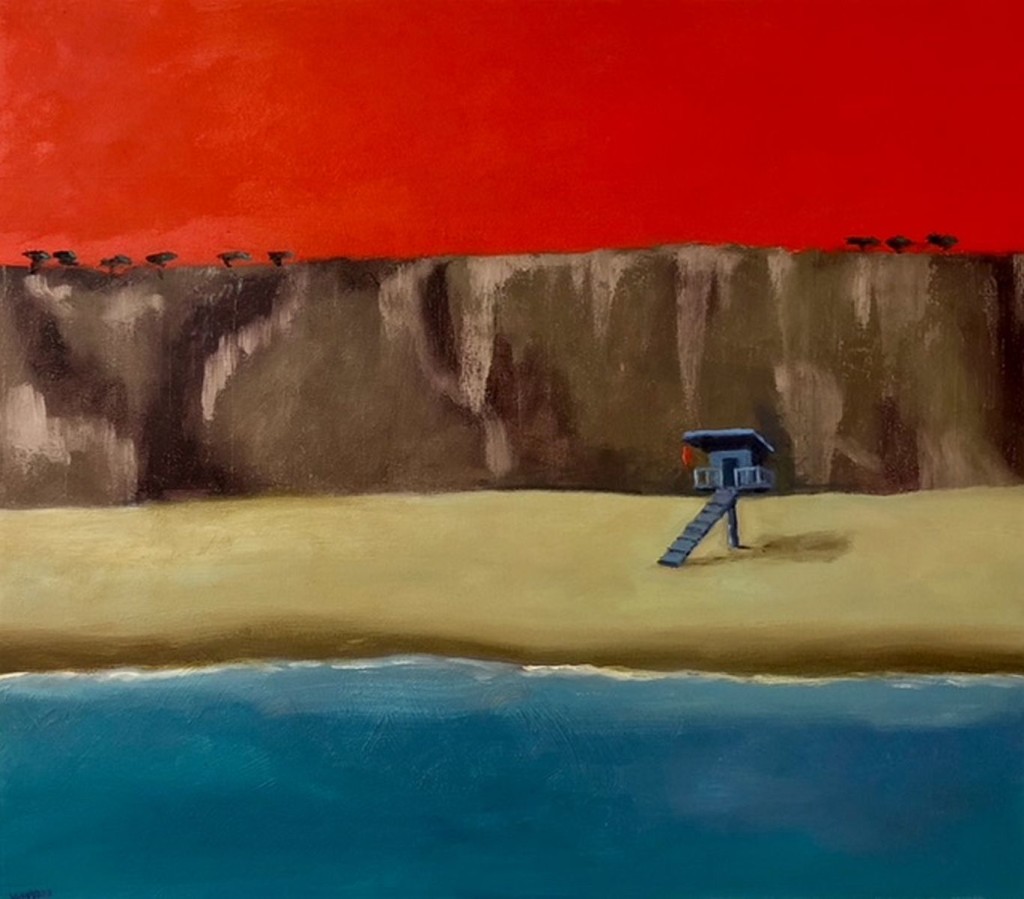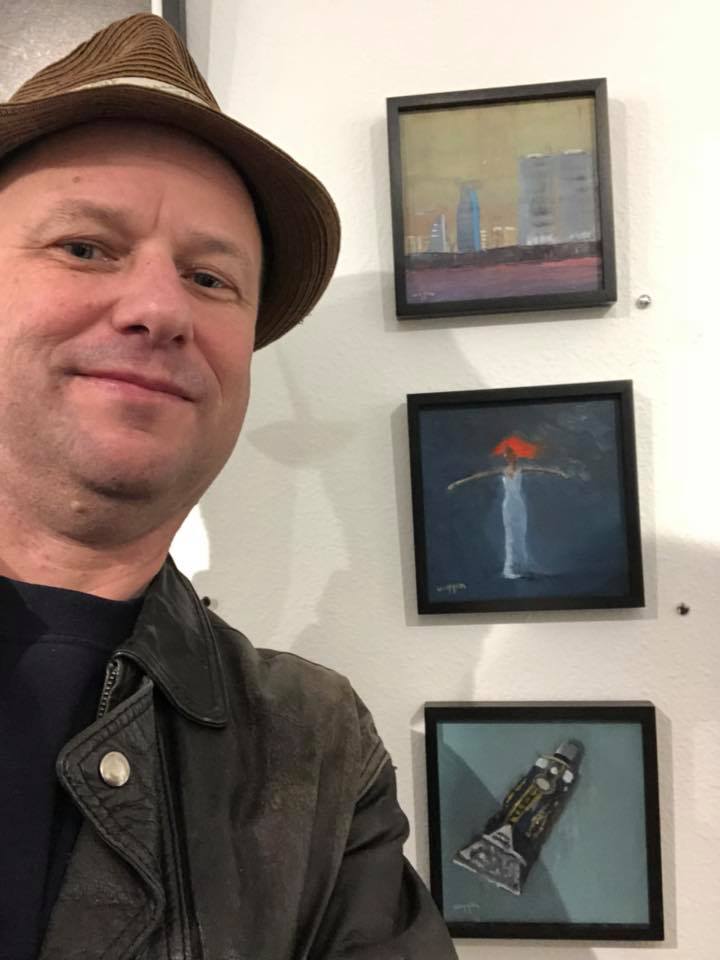Glenn Waggner’s artistic mythology is that of a storyteller with a perfectly rendered aesthetic. A SoCal native, Waggner riffs on familiar images painted in meticulous, diminutive style. His background in architecture shows in his perfect composition, but his oil works are rich microcosms, worlds that viewers can step inside.
“Desert House without Fencing,” above.
Waggner says that his works reflect his intimate visual relationship with his home. “Growing up, I spent every summer day at the beach, and think the light and color from that show in my painting.” He adds “I have worked in architecture for many years and am fascinated by buildings, cities and how things work. I like to take the light, details, and ideas to create a world that is slightly different from the one we live in.”
Above, “With a Twist,” a drink one could swim in, like the backyard pool in an LA-home.
His works are designed, he says, to “spark someone’s thoughts and imagination” and cause them to “think of, or imagine, an experience. I encourage the viewer to create their own narrative of what the painting means, and I love it when they see something I did not consider. It creates a dialog and connection.”
There is a strong riff of humor and lighthearted mayhem in his approach, which may come from the fact that he has “always” sketched scenes or cartoons. “I started painting almost twenty years ago. My day job is in architecture, and for years I tried to separate the two, sort of a church and state relationship. When I finally combined them, everything took on a whole new aesthetic and opened new possibilities.”
Above, “Lift.”
Wherever Waggner exhibits, his work draws viewers in, seemingly through a wide, expansive horizon-line, pulling eye and heart to small, succinct figurative images often on the lower half or in a portion of the canvas.
Above, “It Was Considered Good Form.”
“ I do a lot of small scale work because I like the aesthetic of seeing brush strokes. I plan to do more large-scale paintings, and an 8 foot x 8 foot painting soon, which is much larger than anything I have done,” Waggner relates. “There is also a practical aspect in that collectors may not have a lot of wall space. It seems people with lots of wall space have less money, and people with lots of money have glass walls,” he laughs.
The artist’s work has evolved over the years. “My work started as having an illustrative look to it, then became more painterly and expressionistic. I like the idea of the painting having a story or narrative.”
Exemplifying wit: “The Kitchen Can Only Have One Boss,” above.
His precise structures may be in part due to the fact that he thinks each evocative story through carefully. “My cartoons and sketches translate to stories on my paintings in many cases. I also like to have fun with titles, which always seem to come to me after the painting is finished.”
In his recent “Plotting,” above, two men and a woman stand on the edge of a precipice, appearing to be engrossed in a secret meeting; behind them, inside an illuminated home, three executive-type office chairs are positioned. The piece exudes film-noir and a streak of wit – are they plotting a murder or a board room take-over? “Town House with Lawn View” gives us a long, narrow, expansive view of grass leading to a horizon line, above which swirling grey clouds prevail. In “Gliding,” a galvanizing yet tiny figure skater sails across a frozen expanse, dwarfed by a tree-lined shore and a rich orange sunset sky behind. We ask questions, shape answers from Waggner’s works; they are short stories as paintings.
In “The Tide Goes Out,” below, a vivid red sky is a-flame behind seaside cliffs; the perfect lifeguard tower poised on the edge of a flat blue sea. We have been here in our dreams.
Waggner notes that above all else, he wants “to keep pushing new ideas. Hopefully more opportunities will come about by constantly working and creating.”
“Joshua Tree,” above.
Asked about his paintings’ perspective and scale, Waggner proves that indeed, here, size matters. “Playing with scale can have powerful effects. It is fun to do a large, minimalistic painting and add small, very detailed elements like buildings or people,” he explains. “With small paintings, vivid colors and intimate details can be explored with a deceptively effortless look. There is an immediacy about the smaller scale, even though some take longer than the large paintings.”
These are intimate works, carefully woven, each note of color or line adding a bit of deeper nuance.
“ I started out doing really colorful work, maybe a bit much early on,” Waggner muses. “Then I fell in love with using grays, and now I am somewhere in between.” He says “I do love color because there are so many possibilities and effects. It is sort of a language of its own.”
In Waggner’s works, there are multiple layers of language, of color, size, and story. His often vast backdrops pull the viewer in as we study, smile, and absorb the beautiful, sometimes ironic, always charged quality of his work. This artist tells a story, and he makes it live; these are breathing, moving moments caught in time and canvas, exuding energy and meaning, posing questions we want to answer or at least contemplate.
Here is where Waggner’s architectural background really shows: he is designing, building art that takes on more and more resilient shape and meaning the longer a viewer inhabits it.
- Genie Davis; photos provided by the artist



